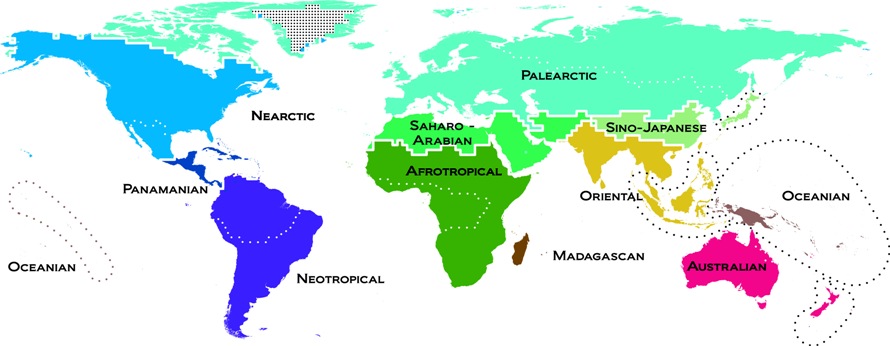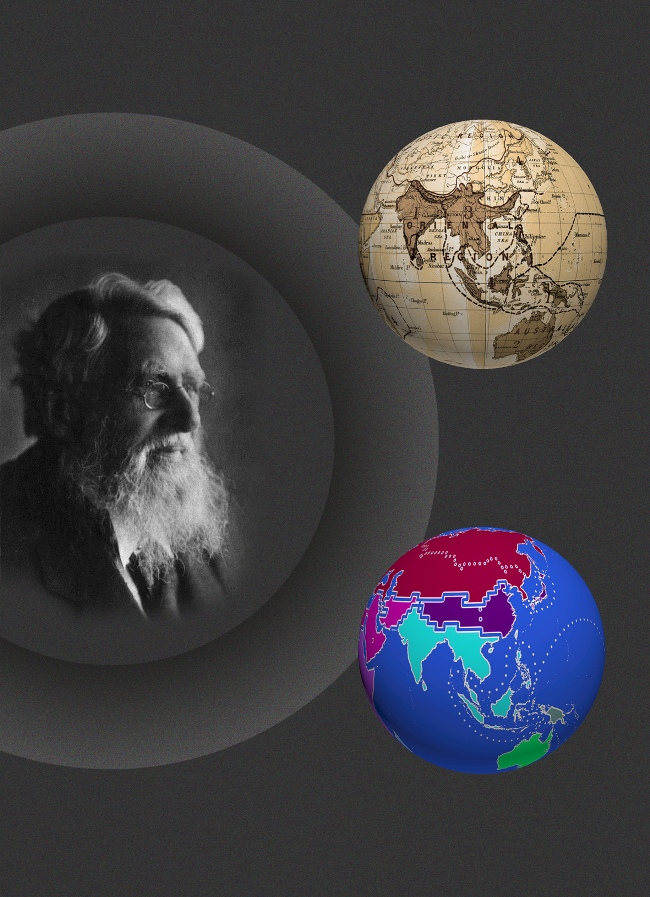
Where Earth's Life Lives: Famous Map Gets an Update

Alfred Russel Wallace was one of the 19th century's foremost naturalists, independently describing what became the theory of evolution, for which his contemporary Charles Darwin is more widely known. Like Darwin, Wallace was influenced by the creatures he encountered on his travels around the world. From these travels, he made a map of global biodiversity that revolutionized the way people thought about the variety of life on Earth.
Now, the map has been updated to include data from 20,000 species, where they live and how they interact with one another, said Ben Holt, a researcher at Denmark's University of Copenhagen. It allows users to see where just about every species of amphibian, mammal and bird lives, Holt said. The updated map is published today (Dec. 20) in the journal Science.
"The map summarizes all the information we have learned … regarding where species are distributed and how they are related to each other," he told OurAmazingPlanet. "The consistency among the groups is quite striking."
Regions in the Southern Hemisphere tend to have an abundance of unique animal communities, with Australia, Madagascar and South America standing out, he said. The variety of life above the equator is less distinct. It's thought this is because of the relative isolation of the areas south of the equator, as well as their unique habitats and abundance of rain and warm temperatures – ingredients for a wide variety of life.

The map is made by inputting species distributions onto a gridded globe, producing a species list for every grid cell, which can then be compared with the species lists of other grids, Holt said.
The resulting map divides nature into 11 large biogeographic realms and reveals how these areas relate to each other. The map incorporates genetic information that wasn't available in Wallace's day, Holt said. [Amazing Species Discovered in 2012]
The map doesn't yet include data for reptiles, plants or insects, because that information is less complete. But those data can be easily incorporated once they become available, he said.
Sign up for the Live Science daily newsletter now
Get the world’s most fascinating discoveries delivered straight to your inbox.
Alfred Russel Wallace (1823-1913) was a British explorer, scientist and collector whose theories on the distribution of life, or biogeography, laid the foundations for many fields of modern biological science.
"The original Wallace map clearly had a massive and unquantifiable influence on the study of global biodiversity," Holt said. "The new map shows the incredible progress that we have made since Wallace's time and also serves as a reminder that we still know very little about how these patterns [of the distribution of life] were formed."
Reach Douglas Main at dmain@techmedianetwork.com. Follow him on Twitter @Douglas_Main. Follow OurAmazingPlanet on Twitter @OAPlanet. We're also on Facebook and Google+.










